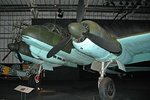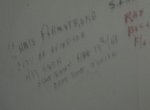Njaco
The Pop-Tart Whisperer
25 April 1943
ATLANTIC OCEAN: Battle of Slow UK/North American Convoy ONS4 - A Swordfish of RAF No. 811 Sqdrn from 'Biter' found 'U-203' and the destroyer 'Pathfinder' finished the submarine off.
EASTERN FRONT: After a lull in the fighting at Warsaw, the German SS troops cut off water and electricity to the Ghetto and continued their clearing operations, burning the city to the ground.
NORTH AFRICA: The British V Corps, with heavy armour support, succeeded in capturing 'Longstop' Hill after heavy fighting.
JG 77 resumed battling in the skies over Tunis. Lt. Ernst-Wilhelm Reinert of 4./JG 77 brought down a Spitfire and an Airacobra in the afternoon, bringing his score to 152 enemy aircraft destroyed.
WESTERN FRONT: I./KG 2 and II./KG 2 returned back to the airfields at Eindhoven and Soesterberg. On the return trip near Lindesnes, a Do 217 from 4./KG 2 crashed into the sea from a collision with a Fw 190 from I./JG 11, based at Lister. Uffz. Helmut Glagla of 1./JG 11 and Fw. Gunther Stahr's entire Dornier crew were killed.
ATLANTIC OCEAN: Battle of Slow UK/North American Convoy ONS4 - A Swordfish of RAF No. 811 Sqdrn from 'Biter' found 'U-203' and the destroyer 'Pathfinder' finished the submarine off.
EASTERN FRONT: After a lull in the fighting at Warsaw, the German SS troops cut off water and electricity to the Ghetto and continued their clearing operations, burning the city to the ground.
NORTH AFRICA: The British V Corps, with heavy armour support, succeeded in capturing 'Longstop' Hill after heavy fighting.
JG 77 resumed battling in the skies over Tunis. Lt. Ernst-Wilhelm Reinert of 4./JG 77 brought down a Spitfire and an Airacobra in the afternoon, bringing his score to 152 enemy aircraft destroyed.
WESTERN FRONT: I./KG 2 and II./KG 2 returned back to the airfields at Eindhoven and Soesterberg. On the return trip near Lindesnes, a Do 217 from 4./KG 2 crashed into the sea from a collision with a Fw 190 from I./JG 11, based at Lister. Uffz. Helmut Glagla of 1./JG 11 and Fw. Gunther Stahr's entire Dornier crew were killed.
Last edited:


